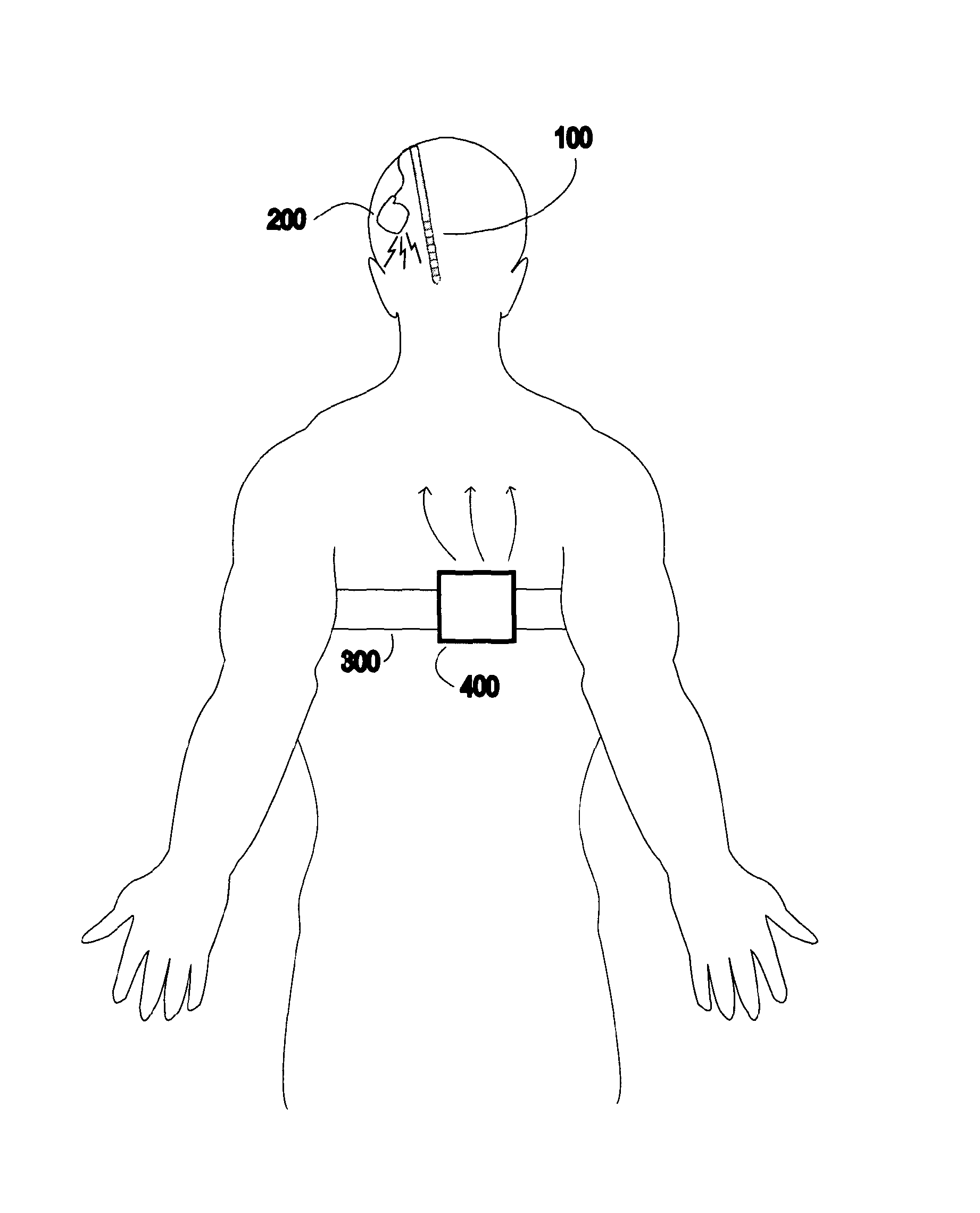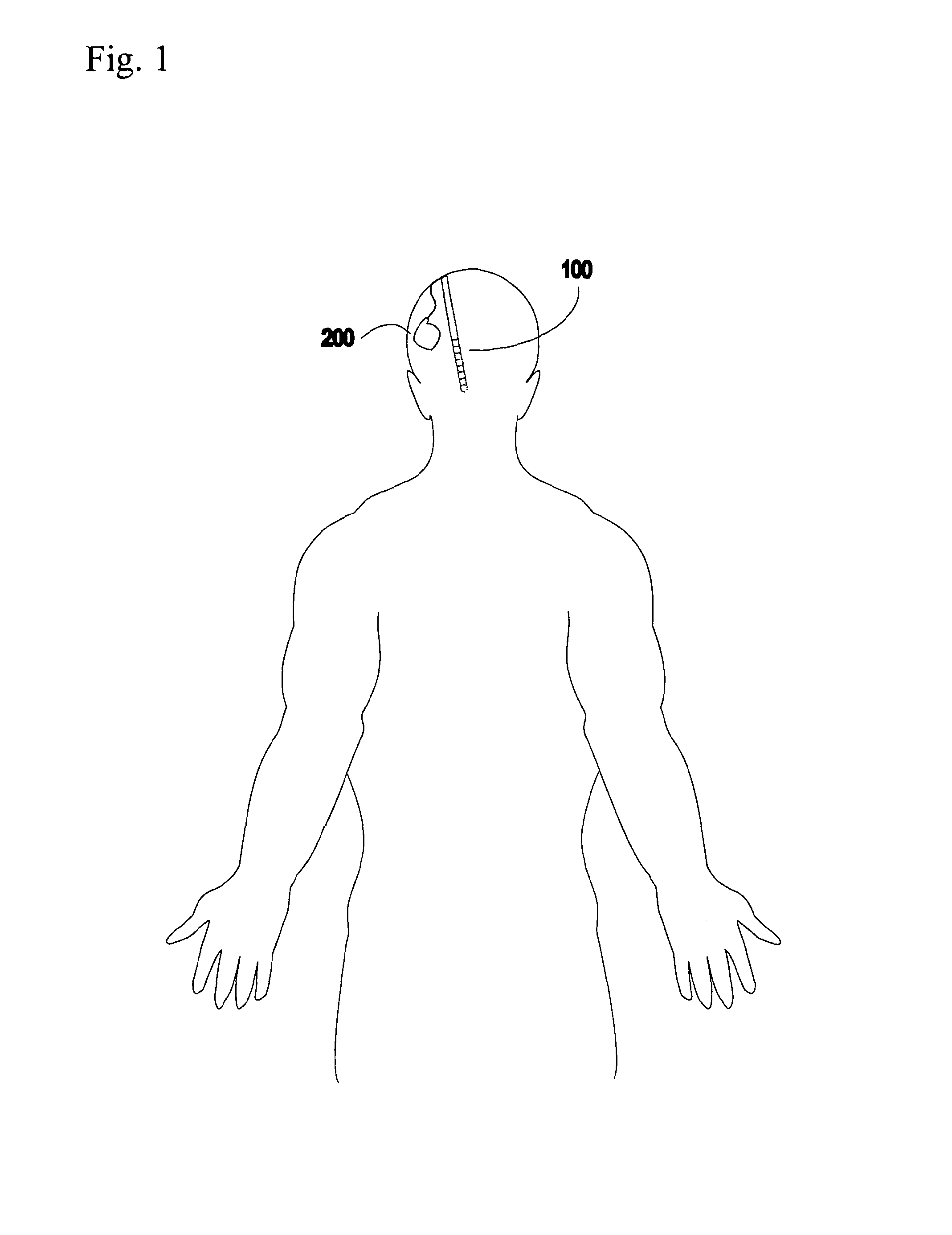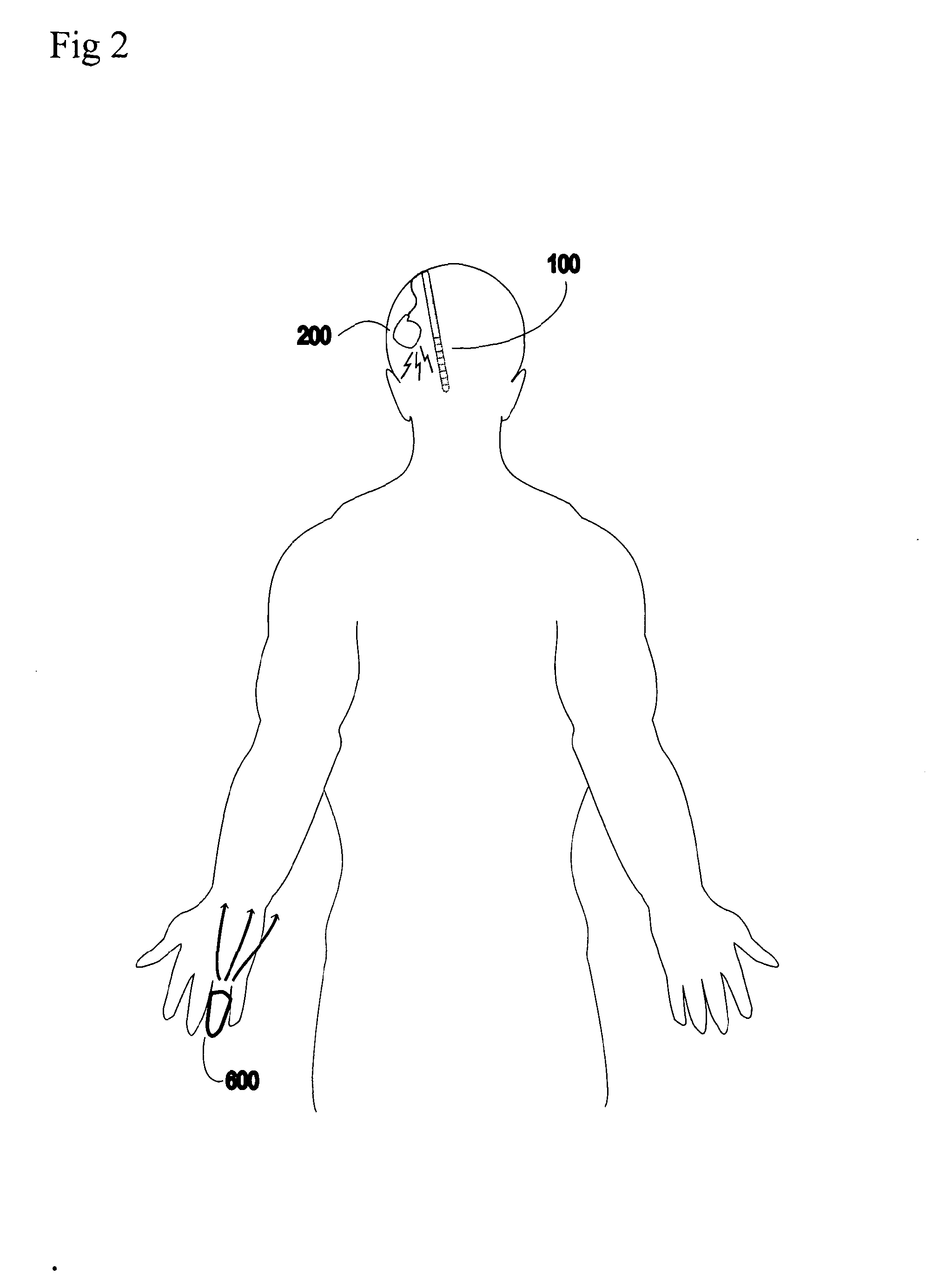Method and Apparatus for Treating Respiratory Disease
a technology of respiratory disease and brain stimulation, applied in the field of deep brain stimulation treatment of respiratory disease, to achieve the effects of modulating motor function, facilitating lung function, and facilitating breathing
- Summary
- Abstract
- Description
- Claims
- Application Information
AI Technical Summary
Benefits of technology
Problems solved by technology
Method used
Image
Examples
example 1
Methods
[0076]The aim of this study was to test whether airways resistance is reduced by electrical stimulation of subcortical sites implicated in respiratory and autonomic modulation, namely the periaqueductal grey matter of the midbrain (PAG), the subthalamic nucleus (STN) and the pedunculopontine nucleus (PPN). The globus pallidus interna (GPi) and sensory thalamus are nuclei not recognised to influence autonomic performance and were used as controls.
[0077]Patients treated with deep brain stimulation for movement disorders (Parkinson's disease or dystonia) or chronic pain syndromes at the John Radcliffe Hospital, UK, and St. Andrew's Hospital, Brisbane, Australia, were recruited. All patients provided informed consent before participation in the study. Ethical permission was obtained from the Oxfordshire Research Ethics Committee C (Study No. 05 / Q1605 / 47) and the Queensland University of Technology Human Research Ethics Committee (Study No. 0900000105) and the study conformed to t...
example 2
Further Experimental Data in Humans
[0102]In a separate experiment, an identical methodology was employed as above but patients were tested who had indwelling ACC and hypothalamus stimulators to treat pain syndromes (chronic neuropathic pain and cluster headache, respectively). Patients with motor thalamus stimulators were used as controls as this site is not implicated as part of the CAN.
TABLE 4Summary of patient diagnoses, demographics and stimulation parameters inthe second experiment.Age (yrs) / StimulatorStimulation Parameters (Voltage, PulseSexDiagnosisLocationWidth, Frequency, Electrode Contacts)55 / MHemi-body painACC Unilateral2.9 v, 170 μsec, 100 Hz41 / FConus injuryACC Bilateral3 v 270 μsec, 40 Hz73 / MHemi-body painACC Unilateral6 v, 300 μsec, 10 Hz62 / MEssential TremorMThal Unilateral3.5 v, 180 μsec, 130 Hz40 / MFunctional TremorMThal Unilateral2.5 v, 150 μsec, 130 Hz66 / FOrthostatic TremorMThal Unilateral1.5 v, 90 μsec, 130 Hz61 / FDystonic TremorMThal Unilateral3 v, 90 μsec, 130 Hz6...
example 3
Electrophysiological and Functional Evidence for the Role of the Pedunculopontine Nucleus in Respiratory Control
[0104]Introduction:
[0105]Neuronal oscillatory activity within subcortical brain has been shown to be an important factor in motor performance (Pogosyan A, Current Biology 2009; 19(19):1637-1641.). The PPN region is part of the reticular activating system and the mesencephalic locomotor region. PPN region stimulation is a novel therapy for gait freezing and postural instability in Parkinson's disease (PD). After administration of dopamine, PPN region oscillations synchronise within the 7-11 Hz band (Androulidakis A G, Experimental Neurology 2008; 211:59-66.). Dopamine has also been shown to improve upper airway calibre during forced respiratory manoeuvres in PD, a disease in which it is often compromised (Vincken W G, Chest 1989; 96(1):210-212.). The study described above has demonstrated that PPN stimulation can produce increases in PEFR. We therefore hypothesized that for...
PUM
 Login to View More
Login to View More Abstract
Description
Claims
Application Information
 Login to View More
Login to View More - R&D
- Intellectual Property
- Life Sciences
- Materials
- Tech Scout
- Unparalleled Data Quality
- Higher Quality Content
- 60% Fewer Hallucinations
Browse by: Latest US Patents, China's latest patents, Technical Efficacy Thesaurus, Application Domain, Technology Topic, Popular Technical Reports.
© 2025 PatSnap. All rights reserved.Legal|Privacy policy|Modern Slavery Act Transparency Statement|Sitemap|About US| Contact US: help@patsnap.com



